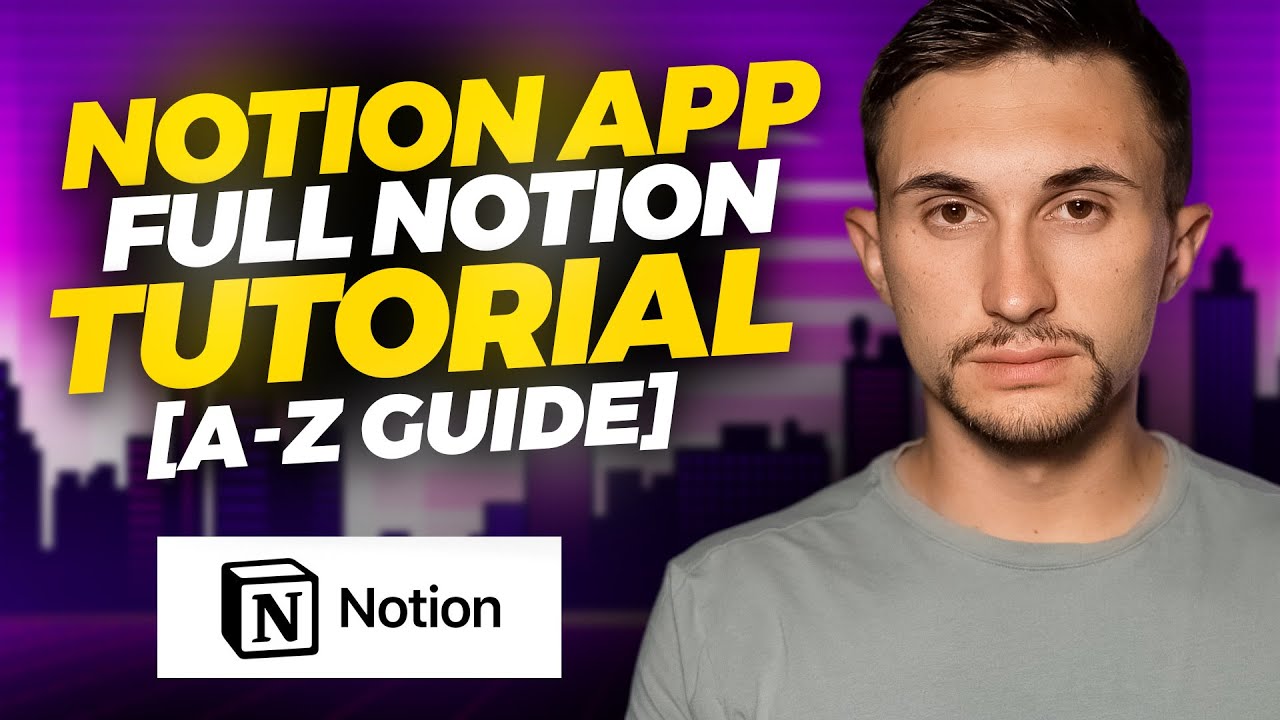In “The Ultimate Notion Guide for Beginners: Full Tutorial in 2022,” you’ll find a comprehensive tutorial that covers everything you need to know about Notion. The article begins by introducing basic concepts such as Notion pricing, settings, and changing the look and feel. It then delves into more advanced topics like text tools, columns, sections, block types, pages, databases, formulas, and linked databases. Suitable for both complete beginners and those looking to enhance their Notion skills, this tutorial provides step-by-step guidance and includes chapters that cover each topic in detail. With this guide, you’ll be able to navigate Notion with ease and utilize its features to their fullest potential.
The article also discusses assigning scores based on the impact and difficulty levels of tasks. The impact levels are categorized as low, medium, and high, with scores of 10, 20, and 30 assigned respectively. The article provides code syntax for assigning scores using if statements and parentheses. Additionally, the tutorial covers creating formulas for calculating the difficulty score, impact to difficulty ratio, and total score of tasks. By sorting tasks based on their total score in ascending order, you can prioritize and focus on the most important and manageable tasks first. This Notion tutorial is a valuable resource for optimizing your productivity and organization.
Chapter 1: Introduction to Notion

This image is property of i.ytimg.com.
What is Notion?
Notion is a powerful all-in-one workspace that allows you to create, organize, and collaborate on your personal and professional projects. It offers a flexible and customizable interface that combines the functionalities of note-taking apps, project management tools, databases, and more. Notion provides a range of features designed to streamline your workflow and increase productivity.
Why use Notion?
There are several reasons why you should consider using Notion for your productivity needs. First and foremost, Notion offers a versatile and intuitive platform that can be tailored to suit your specific requirements. Whether you’re a student, a professional, or simply someone looking to better organize your life, Notion has the tools you need.
Notion enables you to bring all your work and personal projects into one centralized location. You can create pages, databases, and templates to manage tasks, take notes, track goals, and collaborate with others. With its flexible layout and rich content capabilities, Notion allows you to structure and visualize your information in a way that makes sense to you.
Additionally, Notion promotes collaboration by allowing you to invite team members and work together on shared projects. You can assign tasks, leave comments, and track progress directly within Notion, eliminating the need for multiple communication and project management tools.
Another benefit of using Notion is its cross-platform compatibility. You can access your workspace from your computer, smartphone, or tablet, ensuring you’re always connected and able to stay productive, no matter where you are.
Notion vs other productivity tools
While there are many productivity tools available today, Notion stands out due to its versatility and extensive range of features. Here are some key differences between Notion and other popular productivity tools:
-
Flexibility: Notion offers a highly customizable platform that allows you to create and organize your workspace to fit your unique needs. Other tools may have more rigid structures and limited customization options.
-
All-in-one functionality: Notion combines the features of note-taking apps, project management tools, databases, and more into one cohesive platform. This eliminates the need to switch between multiple tools and encourages a streamlined workflow.
-
Rich content capabilities: Notion allows you to create dynamic and visually appealing content using features like tables, kanban boards, calendars, and media embedding. Other tools may have more limited content options or require additional integrations.
-
Collaboration: Notion facilitates teamwork with features like task assigning, commenting, and real-time editing. While other tools may also offer collaboration features, Notion’s seamless interface and shared workspace capabilities set it apart.
-
Cross-platform accessibility: Notion is available on multiple devices and operating systems, including Mac, Windows, iOS, and Android. This ensures that you can access your workspace from whichever device you prefer, providing a consistent user experience.
Ultimately, the choice of productivity tool depends on your specific needs and preferences. Notion offers a comprehensive and customizable solution that caters to a wide range of users, making it a popular choice among individuals and teams seeking a versatile and user-friendly workspace.
Chapter 2: Getting Started with Notion
Creating a Notion account
To start using Notion, you’ll need to create an account. Visit the Notion website and click on the “Sign Up” or “Get Started” button. You can choose to sign up with your email address or use a Google account for seamless integration.
Once you’ve created your account, you’ll be prompted to set up your workspace and create a workspace name. You can choose to create a personal workspace or a workspace for your team, depending on your needs.
Navigating the Notion interface
The Notion interface is designed to be intuitive and user-friendly, allowing you to navigate and access your workspace efficiently. Here are some key elements of the Notion interface:
-
Side panel: Located on the left-hand side of the screen, the side panel displays your workspace’s pages and subpages. You can expand or collapse sections to organize your content.
-
Top toolbar: The top toolbar houses various commands and options to customize your workspace. It includes buttons for creating new pages, accessing templates, and formatting text.
-
Search bar: The search bar at the top of the screen allows you to quickly find specific pages or content within your workspace.
-
Workspace area: The main workspace area is where you create, edit, and organize your content. It consists of different components such as pages, databases, templates, and blocks.
-
Page view options: Notion offers different views for your pages, including list view, board view, and calendar view. You can switch between these views depending on the type of content you’re working with.
-
Sidebar: The sidebar appears on the right-hand side of the screen and provides additional information and options related to the selected page or component.
Understanding the different components of Notion
Notion is built around the concept of pages, which can contain various components and blocks. Here are some key components you’ll encounter:
-
Pages: Pages are the building blocks of Notion and can represent different types of content, such as documents, notes, tasks, or databases. You can create hierarchies of pages within your workspace to structure your information.
-
Databases: Databases in Notion function as dynamic collections of related information. They allow you to create custom tables with columns and rows, where you can store, organize, and filter data.
-
Blocks: Blocks are individual units of content that you can add to your pages and databases. They can include text, images, videos, code snippets, to-do lists, and more. Blocks can be rearranged, formatted, and customized to suit your needs.
-
Templates: Notion provides a variety of pre-designed templates that you can use as a starting point for creating different types of content, such as meeting notes, to-do lists, project trackers, and more. Templates can save you time and help you organize your content effectively.
By understanding these key components of Notion, you’ll be able to create, organize, and customize your workspace according to your requirements. In the next chapter, we’ll explore the basics of creating and organizing pages in Notion.
Continue reading: Chapter 3: Notion Basics




